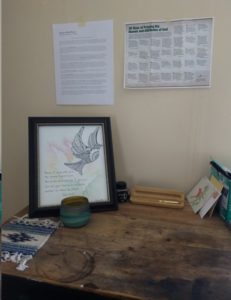Session 7: United Monarchy and the Temple
Welcome
We come now to the period of the United Kingdom under Saul, David, and Solomon, as well as the construction of the Temple.
Just prior to this was the period of the judges, a time without order or rule of law. Judges 2:11-12 gives a good explanation of this: “And the people of Israel did what was evil in the sight of the LORD and served the Baals. And they abandoned the LORD, the God of their fathers, who had brought them out of the land of Egypt. They went after other gods, from among the gods of the peoples who were around them, and bowed down to them. And they provoked the Lord to anger.”
This only happened one generation after Joshua died. At the end of this period, God confirmed Samuel as a prophet, but Israel continued to be afflicted by the armies of the surrounding people, especially the Philistines. As Samuel became old, the people cried for a king. The first king, Saul, turned out to be a disaster because of his lack of submission to God. The next king, David, was a successful military leader and expanded Israel’s territory and wealth. He moved the capital of Israel to Jerusalem, a more central location.
The Temple
Once Israel had peace, wealth, and stability, David wanted to honor the Lord by building him a proper temple. Solomon, David’s son, fulfilled David’s dream of building a temple for the Lord. Watch this video to learn more about Solomon’s Temple.
The high watermark of Israel’s history was the dedication of the Temple. In the video, you may have noticed how symbolic and significant this was for Israel. Before you meet in your small groups, we invite you to build your own worship space for the Lord. Choose a place where you can sit quietly in reflection, a place where you’re not easily interrupted.
Your place of Worship
 Especially during this time of isolation due to COVID-19, having a set location to come before God and worship can be very valuable. So take some time now to make a small “temple” or worship space in your room or somewhere you can sit quietly in reflection.
Especially during this time of isolation due to COVID-19, having a set location to come before God and worship can be very valuable. So take some time now to make a small “temple” or worship space in your room or somewhere you can sit quietly in reflection.
You could use a small tablecloth with candles and a flower or a desk with verses posted on the wall. Be creative – it doesn’t have to be complicated, but we encourage you to make it beautiful! There is something about physical aesthetics that helps us enter into worship in a way that we can’t in an institutional setting.
In Small Groups
Read 2 Samuel 7:1-17
Discuss the following questions
- Why was it important to have a physical temple?
- How is it helpful to have a physical worship space of your own?
- What did having a temple do for Israel? For the surrounding nations?
Develop a Temple vision statement
- Read 1 Kings 8:56-61
- Discuss and fill out page 72 in the handbook:
- What does Solomon’s prayer say about God?
- What does Solomon ask for?
- Write a vision statement for the Temple
Share your vision statement
Choose at least one person in your group to take a picture of his or her worship space, make a meme using the group’s vision statement, and send it to the Origins GroupMe.
Personal Reflection
Set aside at least 15 minutes to spend in your area of worship to dedicate yourself to the Lord, just as Solomon and the people of Israel dedicated the Temple to the Lord.
First, take some time to prayerfully select a symbolic object. This object might be a possession that is meaningful to you, something you find outside, a drawing, or writing on a piece of paper an area of sin you are turning away from or a way you want to trust Jesus more fully.
Next, present your object to God, as an act of completely devoting yourself to our good and faithful God.
Then, take some time to use music to worship. You can use this playlist if you like.
